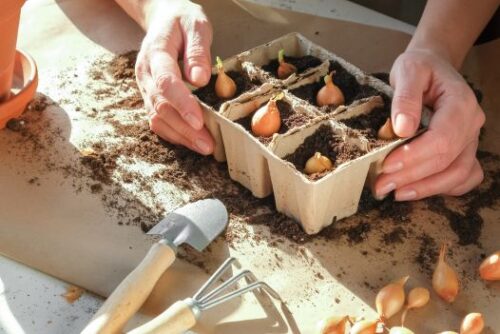Gardening is a rewarding and timeless hobby that allows people to connect with nature, create eye-catching indoor and outdoor spaces, and produce healthy, nutritious food.
While traditional horizontal cultivation in a soil plot remains the popular option for many homeowners, soilless vertical gardening, in most cases associated with magnificent living walls, is increasingly becoming popular these days.
These innovative indoor gardening systems allow gardeners to maximize those little spaces in the living room and kitchen corners, transforming walls and small balconies into little forests.
Between traditional horizontal cultivation and modern tower gardens, which style is perfect for you? This article explores the differences between vertical and horizontal gardening to enable you to make the most informed decision.

Vertical Vs. Horizontal Gardening: Factors to Consider
Vertical gardening allows gardeners to raise plants in vertically stacked systems. These systems are positioned perpendicularly to the ground. Plants are raised in a tower. Similar to traditional gardening, horizontal cultivation is a technique of cultivating plants horizontally or on flat surfaces.
Both horizontal and vertical techniques come with some advantages and disadvantages. You need to consider a number of factors when picking between vertical and horizontal gardening, including:
- Crop variety
- Environmental impact
- Lightning requirement
- Resource efficiency
- Space utilization
- Yield and productivity
Horizontal Gardening: The Traditional Approach
Many people envision horizontal gardening when they think of growing vegetables, flowers, herbs, and fruits. This approach provides several benefits:
- Natural soil: Traditional gardens utilize natural soil, which provides much-needed support, water, and nutrients for plants.
- Ease of maintenance: It’s straightforward to maintain a horizontal garden. Planting, controlling pests and seeds, as well as harvesting are easier.
- Ample space: Horizontal gardening allows farmers to take advantage of large spaces to grow different varieties of plants, from shrubs and flowers to veggies and fruits.
When it comes to limitations, this gardening approach:
- Limits people with less space from growing plants.
- Soil quality may require you to invest a lot of time and resources in enhancing your garden.
online pharmacy https://www.sip.sal.edu.in/wp-content/uploads/2024/02/jpg/avodart.html with best prices today in the USA
- Weeds and pests can easily find their way into your horizontal garden, which requires constant attention.
- Horizontal gardening makes it challenging to make microclimates for some plants.
Vertical Gardening: The Modern Alternative
If you want to maximize your farming space, especially if you’ve got limited room or you’re planning to bring greenery into urban settings, vertical gardening is the perfect option. This approach comes with numerous benefits, including:
- Space efficiency, as you take advantage of unused spaces such as walls, indoor corners, and fences.
- Aesthetic appeal: Modern hydroponic systems are housed in visually appealing containers, making them attractive.
- Reduced pests and weeds due to lack of soil
- Enhanced accessibility as there is no bending or kneeling when taking care of your plants or harvesting.
When it comes to downsides, gardeners need to deal with these common issues:
- Plant selection since not all plants thrive in vertical gardens.
- Nutrient and watering management: It’s more challenging to water and nourish plants in vertical gardens.
online pharmacy https://www.sip.sal.edu.in/wp-content/uploads/2024/02/jpg/zoloft.html with best prices today in the USA
- Specialized equipment: Gardeners must invest in modern systems and equipment, including specialized containers, irrigation systems, and trellises.
Gardyn Vertical Gardening Systems: How Can They Help You?
Gardyn vertical gardening systems provide you with the golden chance to grow the best nature has to offer across the year.
Your favorite food and produce will never be out of season when you decide to go with Gardyn indoor gardening systems.
You can pick from over 80 non-GMO plants optimized for your health and taste buds.
Some of the many benefits you’ll enjoy are:
- Small space, big harvests
- Better taste with zero waste
- No green thumb is required
- Healthy produce, healthier habits.





